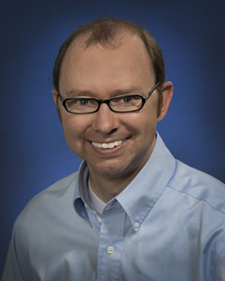Research Interests
Research in the Folden group is centered around the elements at the bottom of the periodic table: heavy elements, very heavy elements, and superheavy elements. Our work tries to elucidate the chemistry and physics of these elements through the three main areas described below. Much of this work occurs in collaboration with colleagues from around the world and at the intersection of nuclear, physical, analytical, inorganic, and organic chemistry. Graduate students in our group work in one or more of these areas, and are trained in the safe handling of radioactive materials, the use of radioanalytical techniques, and the development of improved instrumentation. They have the opportunity to participate in experiments that occur worldwide and present their research at national and international conferences.
Chemical Properties of Superheavy Elements and Their Homologs
The chemical properties of most superheavy elements are virtually unknown, as many have only been studied in a handful of experiments or not at all. These elements must be produced in a nuclear reaction, have their kinetic energies reduced by nine orders of magnitude, be transported to a chemistry experiment, and then studied on an "atom-at-a-time" basis. Our group is working to develop new chemical systems that could be applied to future studies of superheavy elements. We begin by studying the complexation of the expected homolog elements with "designer" molecules such as ionic liquids, deep eutectic solvents, or low-transition-temperature mixtures. We work to elucidate the reaction mechanism using a variety of characterization techniques, and then consider how this information can be applied for first chemical experiments on superheavy elements.
Nuclear Forensics
Concerns about nuclear proliferation have led to an increased interest in deterrent capabilities, one of which is being able to identify the history of nuclear samples intercepted through normal police activities. Such samples would likely have been irradiated in a nuclear reactor and chemically purified. The irradiation can produce substantial quantities of fission products that contain evidence of the reactor type, burnup, and time since irradiation, but the purification will substantially affect the concentrations of these species. In collaboration with the Department of Nuclear Engineering, we are working to develop radiochemical, radioanalytical, and simulation-based techniques for reconstructing the history of irradiated and chemically purified samples. This involves studies of nuclear reprocessing facilities and their chemical processes, analyses of actual irradiated samples, simulation of a variety of nuclear reactors, and the development of maximum-likelihood techniques for final interpretation.
Study of heavy Element Nuclear Fusion Reactions
Between 1981 and 2010, twelve new elements were discovered, but none have been discovered since then. This is likely due to a severe decrease in the survival of compound nuclei produced when projectile and target nuclei fuse, meaning that they are more likely to fission back into two nuclei. Our group is working to elucidate the precise causes of this effect and the lack of new elements discovered worldwide despite multiple very sensitive experiments. We have shown that survival is negatively affected by collective effects in compound nuclei, and that these effects are significant in the reactions currently being studied. Collective effects are made worse by the low deformation of the compound nuclei, and we are interested in studying this effect in nuclei with higher deformations.
Educational Background
- Visiting Research Associate, Michigan State University, 2006-2008.
- Postdoctoral Researcher, University of California, Berkeley, 2004-2006.
- Ph.D., Chemistry, University of California, Berkeley, 2004.
- B.S., Chemistry, Vanderbilt University, 1999.
Awards & Honors
DOE Early Career Award, 2012.
Montague-Center for Teaching Excellence Scholar for the Texas A&M University College of Science, 2011-2012.
Alexander von Humboldt Fellowship for Postdoctoral Researchers, 2006 (awarded but not accepted).
Selected Publications
J. M. Osborn, E. D. Kitcher, J. D. Burns, C. M. Folden III, and S. S. Chirayath, Nuclear Forensics Methodology Development for Reactor-Type Attribution of Chemically Separated Plutonium, Nucl. Tech. 200(1), 1-10 (2017). doi:10.1080/00295450.2017.1401442
E. E. Tereshatov, M. Yu. Boltoeva, and C. M. Folden III, First Evidence of Metal Transfer into Hydrophobic Deep Eutectic Mixtures: Indium Extraction from Hydrochloric and Oxalic Acids, Green Chem. 18, 4616-4622 (2016). doi:10.1039/C5GC03080C
E. E. Tereshatov, M. Yu. Boltoeva, V. Mazan, M. F. Volia, and C. M. Folden III, Thallium Transfer from Hydrochloric Acid Media Into Pure Ionic Liquids, J. Phys. Chem. B 120, 2311-2322 (2016). doi:10.1021/acs.jpcb.5b08924
T. A. Werke, D. A. Mayorov, M. C. Alfonso, M. E. Bennett, M. J. DeVanzo, M. M. Frey, E. E. Tereshatov, and C. M. Folden III, Hot Fusion-Evaporation Cross Sections of 45Sc-Induced Reactions with Lanthanide Targets, Phys. Rev. C 92, 034613 (2015). doi:10.1103/PhysRevC.92.034613
D. A. Mayorov, T. A. Werke, M. C. Alfonso, E. E. Tereshatov, M. E. Bennett, M. M. Frey, and C. M. Folden III, Evaporation Residue Excitation Function Measurements in 50Ti- and 54Cr-Induced Reactions with Lanthanide Targets, Phys. Rev. C 92, 054601 (2015). doi:10.1103/PhysRevC.92.054601

